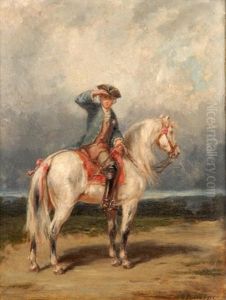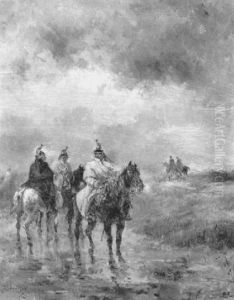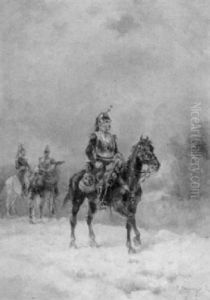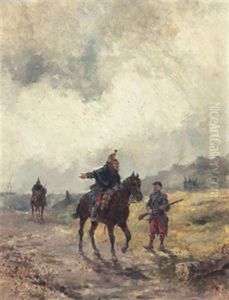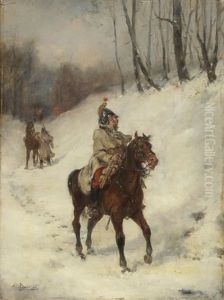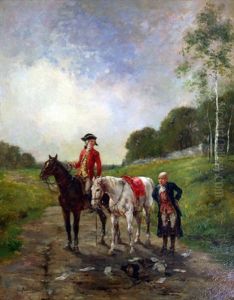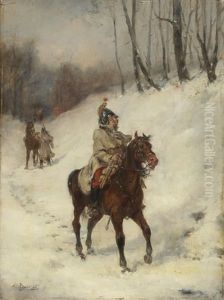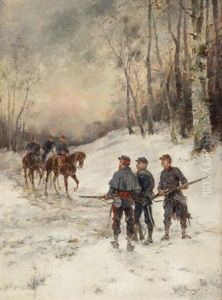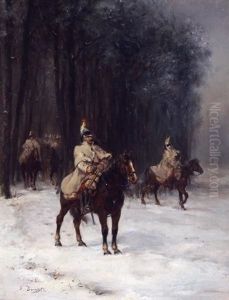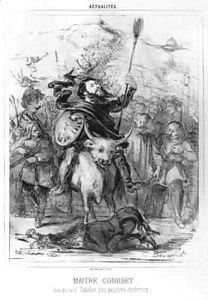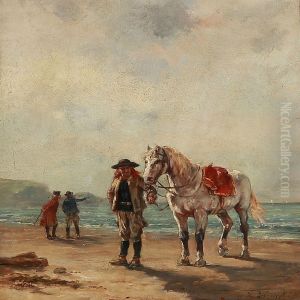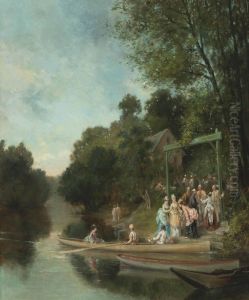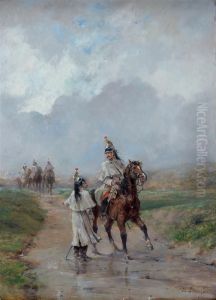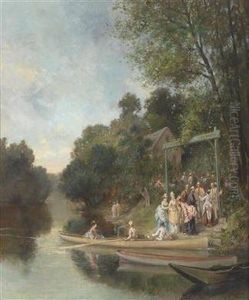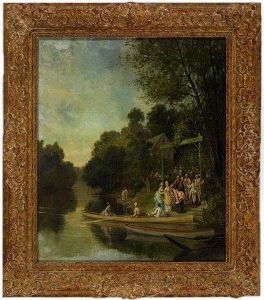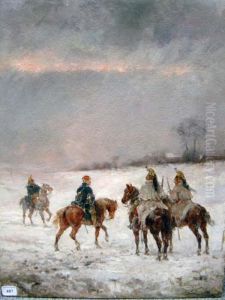Louis Emile Benassit Paintings
Louis Emile Benassit, a French artist whose work spanned the latter half of the 19th century, remains a compelling figure in the realm of academic painting and early Impressionism. Born in 1833, Benassit was immersed in an era of profound artistic transformation, navigating the waters between traditional academic art and the burgeoning Impressionist movement that sought to break away from established norms.
Educated at the École des Beaux-Arts in Paris, Benassit was a student of renowned artists such as François-Édouard Picot and Léon Cogniet, who were pivotal in shaping his early artistic outlook. His training under these masters equipped him with a solid foundation in the techniques and principles of academic art, emphasizing precision, form, and the use of historical and mythological subjects. However, as his career progressed, Benassit began to explore the emerging Impressionist style, which favored spontaneity, lighter palettes, and scenes of contemporary life over the grandiose and idealized subjects of academic painting.
Throughout the 1860s and 1870s, Benassit exhibited his work at the Paris Salon, the premier art exhibition in France. His submissions, which ranged from classical portraits to landscapes imbued with a nascent Impressionist sensitivity, garnered attention and acclaim. Despite this, Benassit never fully aligned himself with the Impressionist movement, preferring instead to straddle the line between traditional and innovative practices. This duality in his work reflects the broader artistic tensions of his time, as artists grappled with the rapid evolution of artistic styles and the increasing demand for a depiction of modern life.
Benassit's contributions to French art, though perhaps not as widely recognized as those of his contemporaries, were significant in their own right. He played a part in the transition that paved the way for the full flowering of Impressionism and the subsequent developments in modern art. Beyond his paintings, Benassit was also involved in the artistic community of his time, engaging with fellow artists and participating in the intellectual and cultural discourse that shaped the direction of French art in the late 19th century.
Louis Emile Benassit passed away in 1902, leaving behind a body of work that captures a fascinating moment of transition in art history. His paintings, characterized by their blend of academic rigor and a sensitivity to light and atmosphere, continue to be studied for their contribution to the narrative of 19th-century French art. Through his exploration of both traditional and new forms of expression, Benassit exemplifies the complexities and dynamism of an era that laid the groundwork for the modernist revolutions to come.
